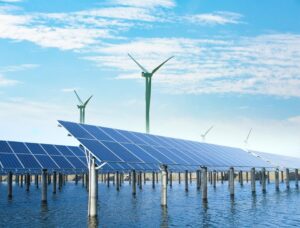 Today we live in an age of environmental emergency due to global warming, and not without reason. The consequences of this have become very palpable in the last 10 years, with our planet suffering major and more frequent storms and other weather phenomena, shortages of potable water, temperature increase, rising sea levels and endless consequences thereof. Social movements, organizations, countries and other agencies are now aware of the moral necessity and urgency of implementing an energy change, sustainable in the long term, to ensure growth and socioeconomic stability, and to mitigate the alarming CO2 emissions globally. Currently, there are commitments from 66 countries to achieve zero emissions by 2050.
Today we live in an age of environmental emergency due to global warming, and not without reason. The consequences of this have become very palpable in the last 10 years, with our planet suffering major and more frequent storms and other weather phenomena, shortages of potable water, temperature increase, rising sea levels and endless consequences thereof. Social movements, organizations, countries and other agencies are now aware of the moral necessity and urgency of implementing an energy change, sustainable in the long term, to ensure growth and socioeconomic stability, and to mitigate the alarming CO2 emissions globally. Currently, there are commitments from 66 countries to achieve zero emissions by 2050.
This energy change is not a matter of days or months when you consider the past 120 years of growth and development of our social, economic, and energy framework based on fossil fuels and derivatives, which are finite and eventually generate a negative impact. The transition toward a socioeconomic model based on renewable resources and sustainable energy will happen over many years. Fortunately, the resources for this energy transition are known. In the electricity sector, solar energy generation has become cheaper and has gained relevance in the market and in society. It is expected that renewables will increase in 1,200 GWh over the next four years, and companies with a business model that ensures stability and sustainable growth will become leaders in the production and sale of energy.
A lesser known resource is hydrogen, despite being the most abundant clean fuel in the universe. Power generation by the fuel cell hydrogen has been known since 1839, and it is currently used in many applications throughout various sectors. In the transport sector and mobility, Toyota and Hyundai, two of the world’s leading manufacturers of vehicles, have hydrogen fuel cell models with the Mirai and Nexo, respectively, with an autonomy range of 600 km and the same performance as a fossil fuel vehicle. Logistics multinationals in product distribution, like Walmart and Amazon, are using forklifts motorized by fuel cell hydrogen in their distribution stores to increase productivity and efficiency. Hydrogen also begins to make sense as a sustainable alternative to land and sea transport over long distances.
Currently, 120 million tons of hydrogen are used every year in different processes of the industrial sector. Over the next few years, large-scale initiatives will be developed in the transport and mobility sector, as well as in the gas distribution network and industry, so it is expected that sustainable demand will increase over the next decade. From the annual production of hydrogen, 95% comes from fossil fuel by reforming of methane gas or other derivatives, and only 5% is produced by electrolysis in a sustainable manner. This is mainly affected by the cost of production of H2 — $3 to $4 per kg of H2 market versus $1 to $2 per kg produced by reformed gas — although it is anticipated that the costs of producing renewable hydrogen will be equalized during this decade.
Source: “Hydrogen As A Sustainable Energy Resource” Forbes
